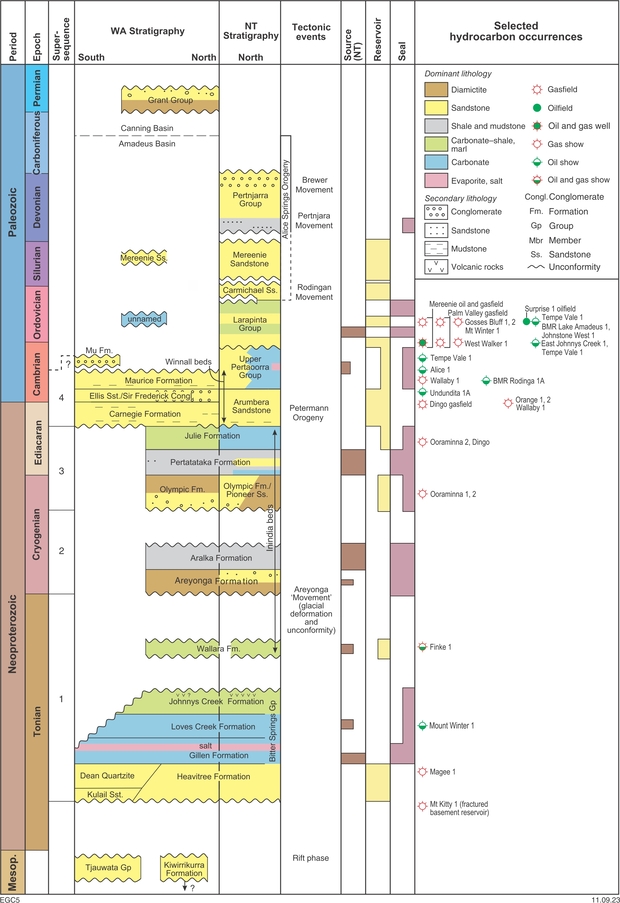Amadeus Basin
The Amadeus Basin covers about 180 000 km2 in central Australia. Most of the basin lies within the Northern Territory with about 46 000 km2 extending into Western Australia, including areas beneath the easternmost Canning Basin and outlying structural sub-basins in the north. Only the eastern part of the basin, with existing petroleum industry infrastructure, is well studied.
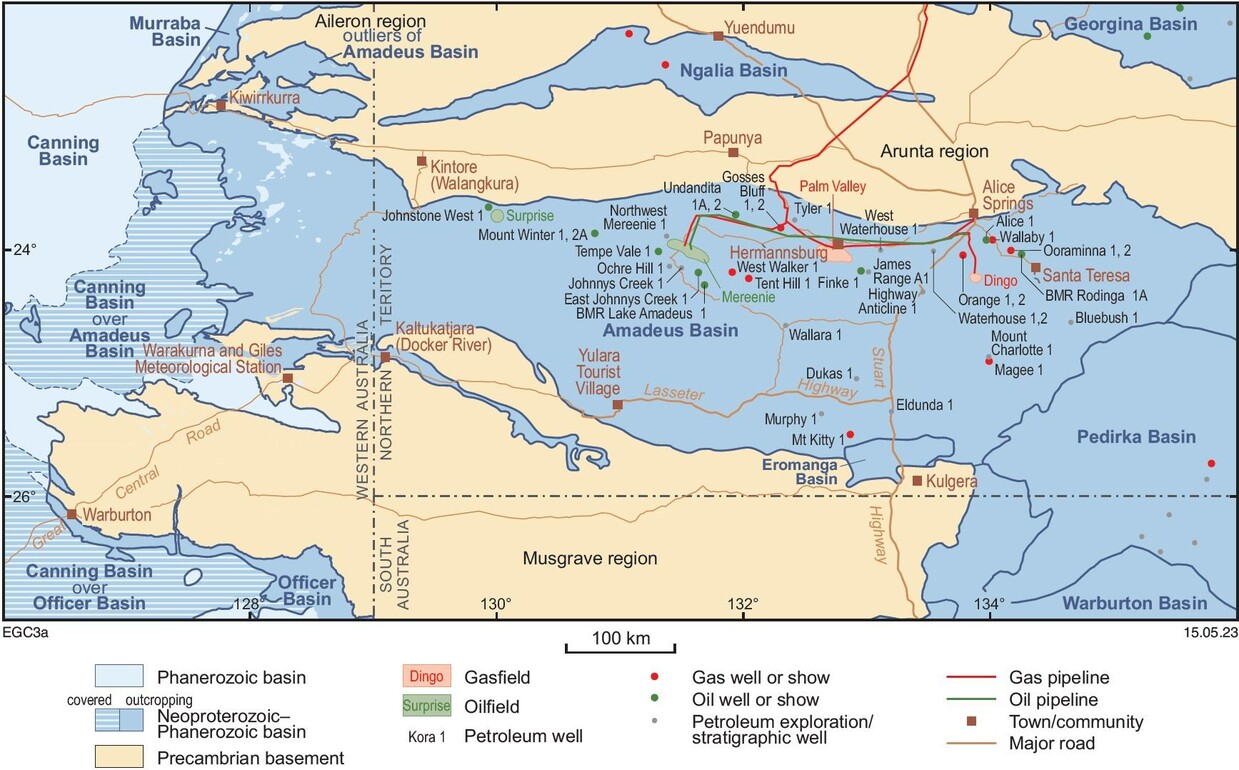
Geological setting
The intracratonic Amadeus Basin overlies Paleo to Mesoproterozoic metamorphic and igneous basement domains of the Warumpi and Aileron Provinces (north) and Musgrave Province (south), and locally contains up to 14 km of Neoproterozoic and Paleozoic sedimentary rocks. It is overlain to the west by upper Paleozoic (Permo-Carboniferous) rocks of the Canning Basin. The present basin margins are mainly of tectonic origin, the Amadeus Basin being one of several remnants of the Centralian Superbasin, a much larger intracratonic depositional system that was progressively fragmented by major convergent tectonic events including the latest Neoproterozoic to earliest Paleozoic Petermann Orogeny, and the mid to late Paleozoic Alice Springs Orogeny.
Exploration history
Petroleum exploration in the Amadeus Basin has been almost entirely restricted to the better studied and more accessible Northern Territory portion. The first exploration well, drilled in 1963, was followed by the discovery of the large Mereenie oil and gas field in 1964 and Palm Valley gasfield in 1965. Both fields have been producing since the mid-1980s, with oil transported via a pipeline to Alice Springs and gas via pipelines to Alice Springs and Darwin. Early exploration focused on prominent surface anticlines, with later exploration targeting seismically defined objectives. Other discoveries include the Dingo gasfield (1981) and Surprise oilfield (2010), and significant shows in other wells. Production from the Dingo gasfield commenced in December 2015, with the gas piped to the Owen Springs Power Station at Alice Springs. This represents the first commercialisation of Precambrian hydrocarbons in Australia. The Surprise oilfield was in production during 2014–15 but has been shut-in due to low oil prices.
No exploration wells have been drilled in the Western Australian portion of the basin. Early work there included outcrop studies and some shallow stratigraphic drillholes, although the latter were not reported to the Department. Two lines of the 1972 Hickey Hills seismic survey show Amadeus Basin strata beneath thin cover of the Canning; however, the quality of this data is very poor. More recently, Central Petroleum Ltd conducted an airborne gravity survey over SPA 7/04-5 AO, which covers most of the Western Australian part of the basin.
Prospectivity
Studies of the Northern Territory portion of the Amadeus Basin have identified at least four petroleum systems. The youngest, Larapintine 1 of Ordovician age, is associated with the large producing Palm Valley gasfield and Mereenie oil and gas field, and the smaller shut-in Surprise oilfield. The Surprise oilfield was in production during 2014–15 but was shut-in due to low oil prices. Whereas this system generated significant shows elsewhere across the northern half of the basin, it is not considered prospective in Western Australia because Ordovician strata are thin, preserved only locally, and the Horn Valley Siltstone source appears to be absent. Ongoing exploration in the Northern Territory targets older petroleum systems all related to Neoproterozoic sources such as those associated with the Dingo gasfield and other significant oil and gas shows.
Three Neoproterozoic petroleum systems possibly operate in the Amadeus Basin:
- The oldest system involves gas-prone source rocks in the lower Gillen Formation of the Bitter Springs Group. Sandstone of the underlying Heavitree Formation is the most likely reservoir, whereas a widespread salt unit in the upper Gillen Formation provides a seal. The ‘Gillen petroleum system’ is noted for its high content of basement-sourced helium, which comprises 6.2% of the gas in Magee 1 and 9% in Mt Kitty 1; gas in the latter also included 11% hydrogen.
- The second system consists of potential oil-prone source rocks in the upper Bitter Springs Group, and gas-prone intervals in the Wallara and Aralka Formations, plus correlatives within the ‘Inindia beds’ in the south.
- The third system incorporates source rocks of the shaly Pertatataka Formation with the uppermost Neoproterozoic to Cambrian Arumbera Sandstone as a reservoir.
In the absence of drillhole information, the source and reservoir potential, and maturity of the succession within the Western Australian Amadeus Basin remains speculative. However, the recent recognition that the stratigraphy and facies of the western part of the basin have much more in common with the well-studied succession east of the State border than previously thought raises the possibility that some, or all, of the Neoproterozoic petroleum systems and plays in the Northern Territory may be present in Western Australia.
GSWA publications
-
 Report 235
Western Officer Basin SEEBASE structural study and GIS
Report 235
Western Officer Basin SEEBASE structural study and GIS
-
 GIS data package
Western Officer and Amadeus Basin SEEBASE structural study and data package
GIS data package
Western Officer and Amadeus Basin SEEBASE structural study and data package
-
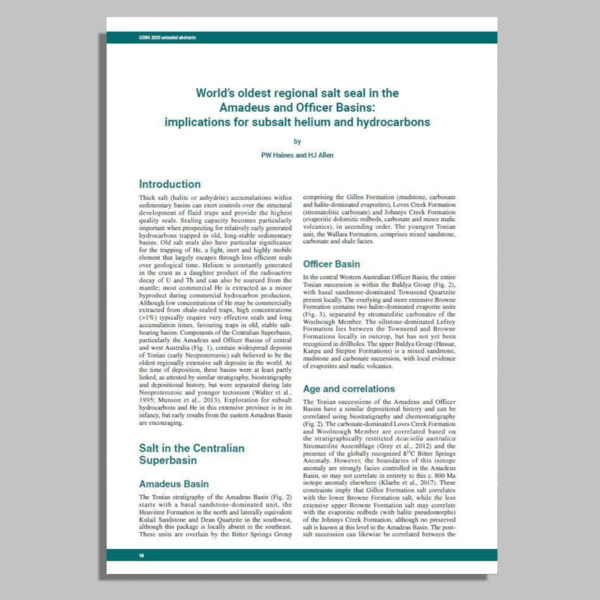 Record 2020/2 GSWA extended abstract
World's oldest regional salt seal in the Amadeus and Officer Basins
Record 2020/2 GSWA extended abstract
World's oldest regional salt seal in the Amadeus and Officer Basins
-
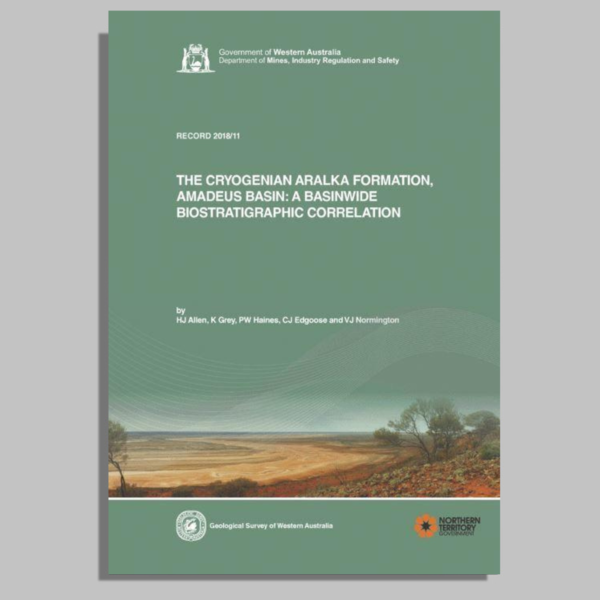 Record 2018/11
The Cryogenian Aralka Formation, Amadeus Basin: a basinwide biostratigraphic correlation
Record 2018/11
The Cryogenian Aralka Formation, Amadeus Basin: a basinwide biostratigraphic correlation
-
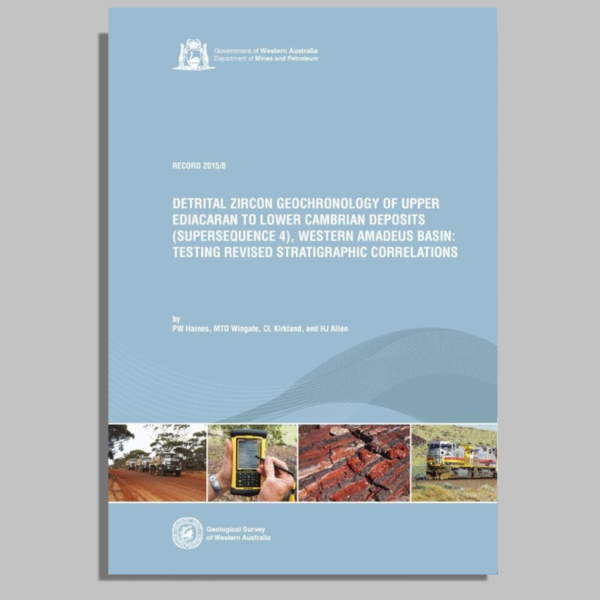 Record 2015/8
Detrital zircon geochronology of upper Ediacaran to lower Cambrian deposits, Western Amadeus Basin
Record 2015/8
Detrital zircon geochronology of upper Ediacaran to lower Cambrian deposits, Western Amadeus Basin
-
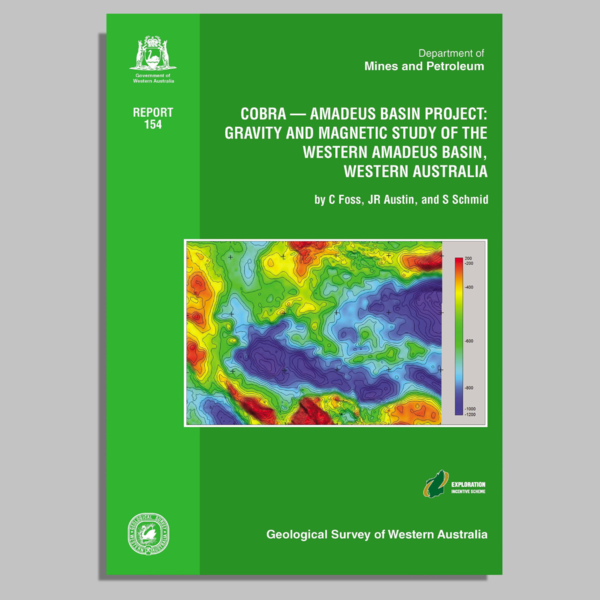 Report 154
Amadeus Basin Project, gravity and magnetic study of the Western Amadeus Basin
Report 154
Amadeus Basin Project, gravity and magnetic study of the Western Amadeus Basin
-
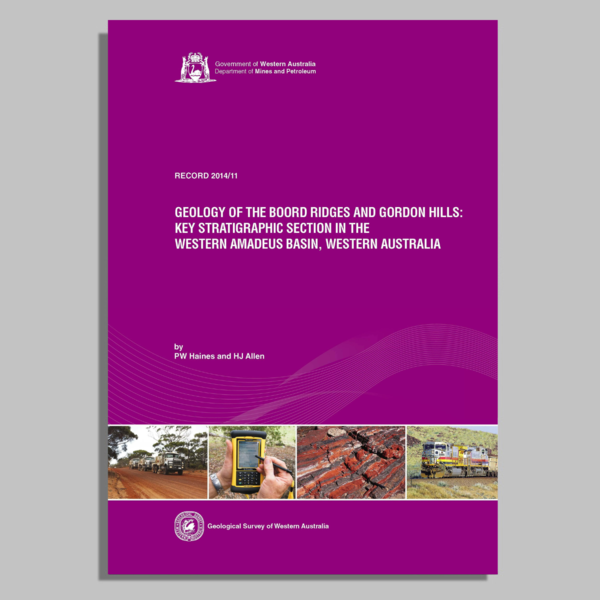 Record 2014/11
Geology of the Boord Ridges and Gordon Hills: key stratigraphic section in the western Amadeus
Record 2014/11
Geology of the Boord Ridges and Gordon Hills: key stratigraphic section in the western Amadeus
-
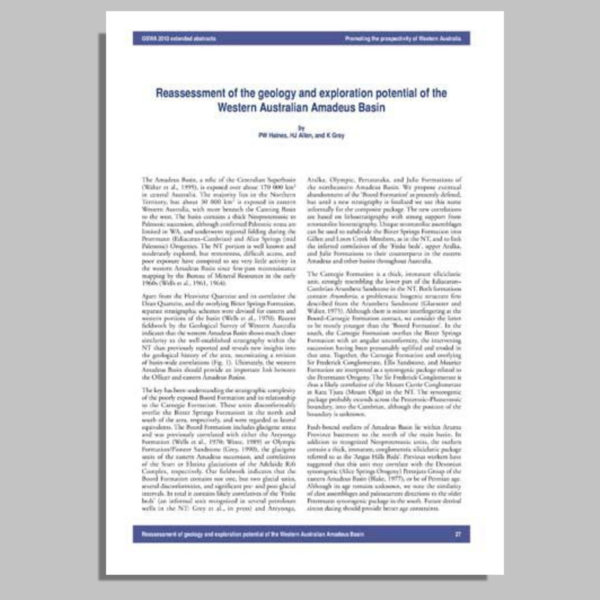 Record 2010/2 GSWA extended abstract
Reassessment of the geology and exploration potential of the Western Australian Amadeus Basin
Record 2010/2 GSWA extended abstract
Reassessment of the geology and exploration potential of the Western Australian Amadeus Basin
Further reading
Haines, PW and Allen, H-J 2019, Hydrocarbon and helium prospectivity of the Amadeus and Murraba basins in Western Australia, in The sedimentary basins of Western Australia V: Proceedings of the West Australian Basins Symposium edited by M Keep and SJ Moss, Perth, Western Australia, 2–5 September 2019: Petroleum Exploration Society of Australia, 17p.
For further information contact:
basinenergy.geoscience@dmirs.wa.gov.au

